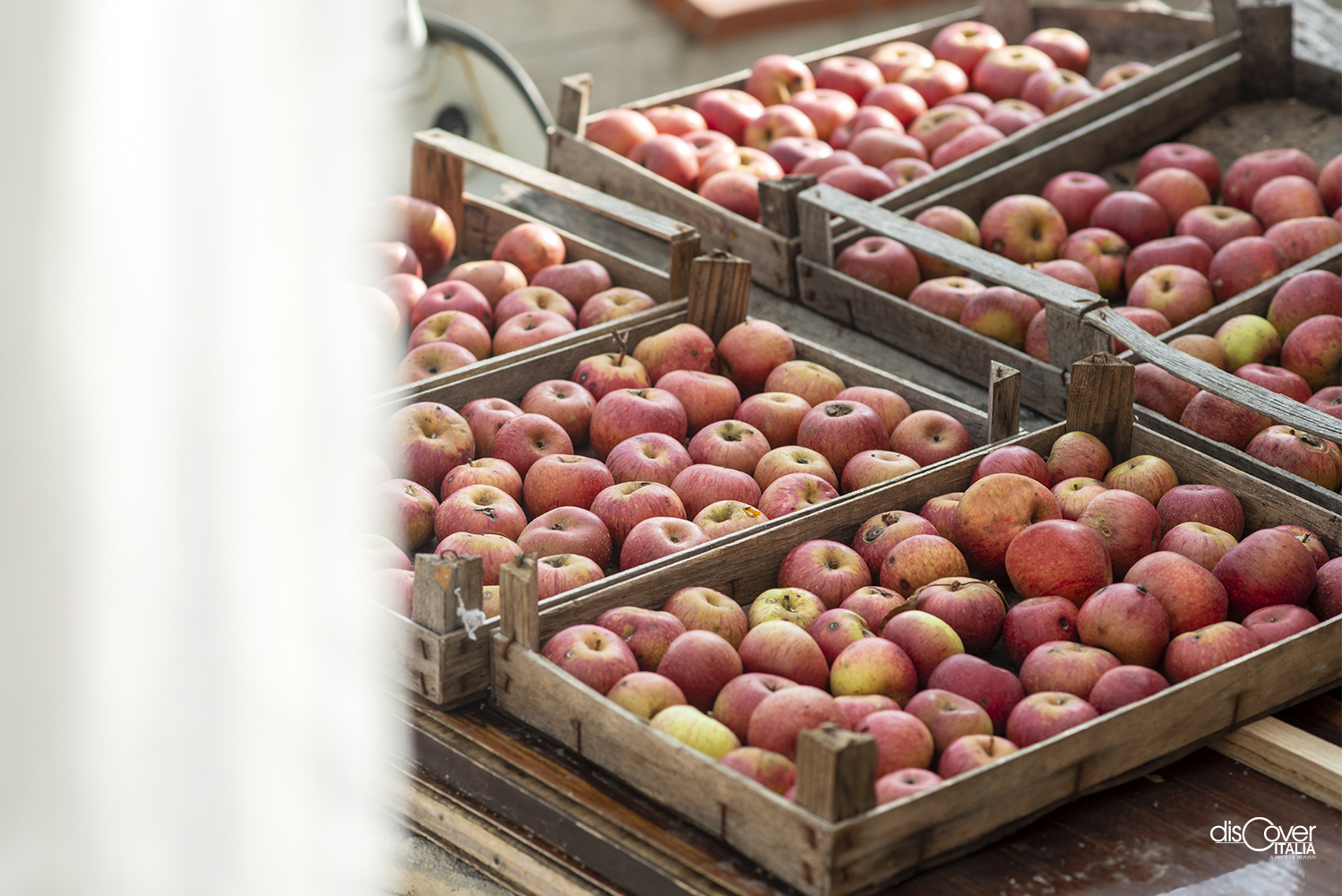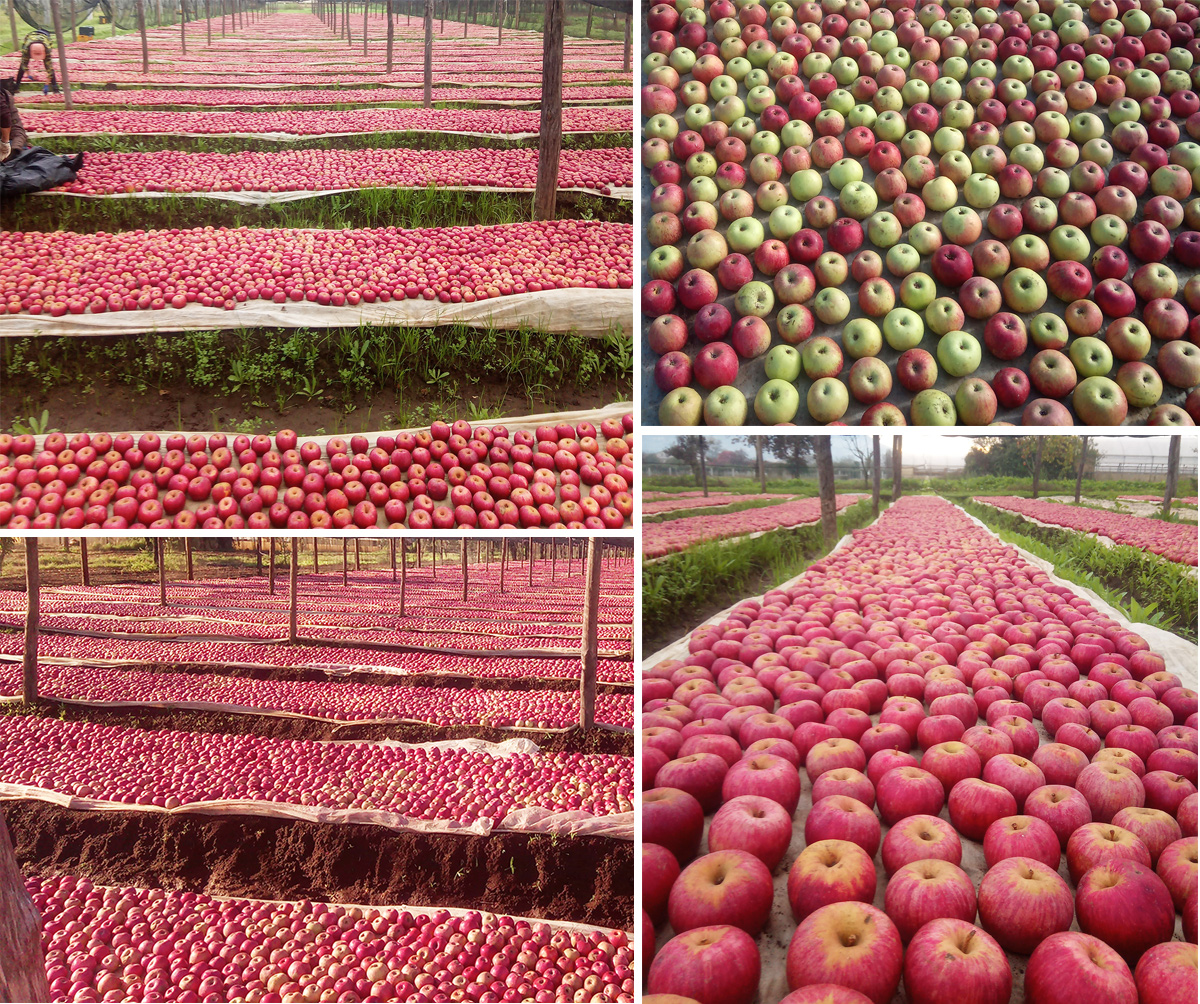It is with the autumn equinox that the time for the apples arrive in the valleys of the Lower Samnium.
The Caudina and the Telesina valley are historically part annurche apples area, together with the bordering valleys of Caserta from which the orchards have progressively spread during the recent years in the large plain, until reaching the sea, near Sessa Arunca.

A millennial expansion, consequence of the great notoriety conquered by the Campania apple, thanks to the scientific studies which have valorised the nutritional qualities, and sealed by the European recognition of the Protected Geographical Indication in 2006. A beautiful ending for a species that forty years ago had risked the extinction, supplanted in the tastes of the consumers by a larger and redder American apple and even destroyed by a flood. However, nothing could cancel the value and the unique particularities of the small Orcula, described by Pliny and so much appreciated by the Romans that it is represented in some wall paintings of Pompeii and Herculaneum.
The Annurca apple is ancient, like the lands suited to its cultivation, begun by the Osci and the Samnites. With unchanged characteristics over time, although the 2.0 rebirth has introduced new features that have marked a significant evolution in the wake of continuity. The one of the measured gestures, of the hard work and of the precision with which also this year the yellow apples were picked by hand. They are still unripe and practically inedible. The plants would soon been freed, because it is not on the maternal branches that the Annurche ripen.

Antonio Ciervo ( + 33 823/956565 ) knows this well. On its lands in Sant’Agata de’ Goti, in the heart of the Caudina valley, apple trees have grown before he was born. He remembers them since his grandfather followed them and then in the hands of his father “who sold the trees with the apples on them”. Here in our village, all the farmers had always had apple trees. Therefore, when he was a kid, he had this passion which made him decide to resume the cultivation of apples in 1980. At the beginning, he sold them on the trees as well, then he started to look after the red colouration, which is the most delicate, characteristic and spectacular phase of the very particular life cycle of the Campania melannurca.
“Our climate, in the valleys, is the most suitable for the annurche - Ciervo explains - because of the temperature changes between the hours of day and night, which the lands closer to the sea don’t have and which, however, are fundamental for the ripening of the apples and for the appearance of the red colour characterising it. A red that changes according to the different cultivars used, one of the innovation of the modern plants. Because the traditional annurche, the oldest ones, are today the least widespread. And they are the ones presenting the lighter shade of red, once the ripening is complete, compared to the other two “sister” varieties, now prevalent: the Rossa del Sud ("Southern Red"), more “coloured”, with almost purple reflections, and the “Bella del Sud” ("Southern Beautiful"), a little lighter.
The advent of the latter has changed the times and pace of the production. “When I was a kid - Ciervo remembers” - the trees were five or six meters high and hand picking was more complicated and then started later, in early October. The phase of red colouring lasted no less than 30/35 days and so we arrived in November, with cold and bd weather. The new varieties allow us to start the harvest around the 21st/ 22nd of September and the permanency in the "melaio" (places where the annurca trees are) lasts about fifteen days, therefore we end in mid-October, when the season is still good”.
The passage to the melaio is fundamental and is as delicate as laborious. Since the preparation of the so-called “porche”, which are large strips of raised land, separated by drainages to drain the rainwater and traditionally covered by wheat straw, then replaced by untraded wood shavings, “while from few years ago we use nonwoven sheets, the fabric-like material of the masks, to be clear, which don’t make weeds grow and prevent snail attacks”, Ciervo mentions. It is above those white, well-leveled, clean and soft “beds” that the freshly picked apples are placed, and transported with very great care to the orchards in 18/20 kilos boxes. “The apples are carefully arranged and spaced, so that they don’t touch each other and that the light reaches also them on the sides, placed initially with the stalk below - this is the description of the expert - After a few days they are turned with the stalk upwards one by one, by hand, selecting the ones to discard and checking that they are not rot. Operations which, traditionally, women do”.
There, in the melaio, the annurche become red thanks to a sun exposure protected by the shading sheets, which don’t let the direct rays to burn the apples, making them shrivel. There is great care behind the reddening of every single apple: demanding work, “which, however, gives great satisfaction” Ciervo underlines, looking at melai full of apples with pleasure, which stand out for their bright red colour among the green of the countryside. Now, most of the fruits have almost completed the ripening, while in the other melai there are yellow spots of the annurche from later harvests, which are slowly changing colour. It is the victory of the ancient, tasty and healthy Orcula. Which has returned to being appreciated and chosen in the recent millennium as it used to be in the other two thousand years of its previous history.



Comments powered by CComment